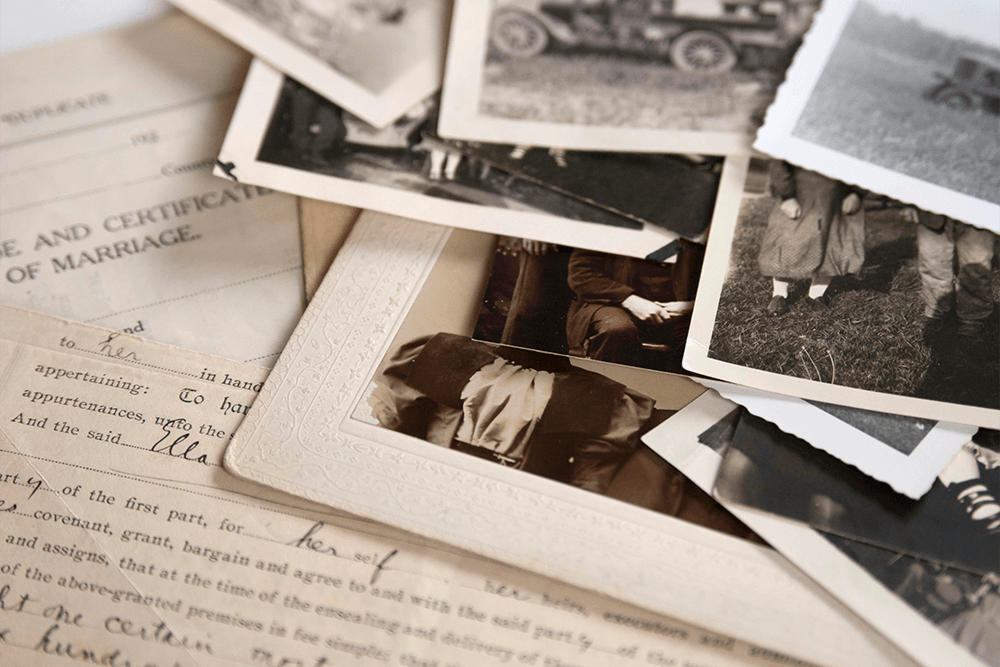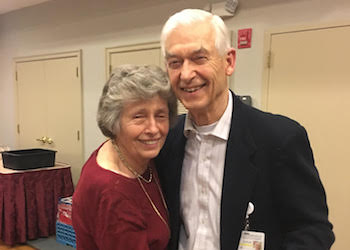Getting Started in Genealogy: Resources and Tips for Beginners
May 23, 2022
Was your ancestor aboard ship when Henry Hudson explored Newark Bay? Was your great-aunt Maudie really a successful bootlegger?
A deep dive into genealogy could answer these and other burning questions. If you’re curious, persistent, and patient, tracing your ancestry could become an incredibly rewarding pastime.
Getting started with genealogy
People who quickly give up on genealogy are usually going about it the wrong way. Try this approach:
- Decide what you most want to know.
Maybe you’re curious about the first immigrants in your family. Maybe you’re looking for relatives who served in WWI. Perhaps you wonder about an unidentified baby in a faded photograph.
In other words, start with a narrow search. Branch out from there.
- Don’t start with Aunt Maudie and work forward. Start with yourself. Work backward.
Begin with people you already know such as your parents, grandparents, aunts, uncles, and cousins.
- Be organized from the beginning.
Construct a family tree using an online template or old-fashioned pencil and paper. Record marriages, births, divorces, and deaths as far back as you can remember.
Include details like occupation, military service, or place of baptism. Nothing is insignificant — Maudie’s frequent traveling could place her in certain towns at certain times. Even “useless” tidbits of information will enrich your project.
- Start the fact-finding mission close to home.
Before you delve into Ellis Island and U.S. Census records, explore the gold mine of information within your reach. If you’ve ever fancied yourself a sleuth, now’s your chance.
Interview relatives and close family friends. Their recollections may be deeply flawed, but don’t worry about that. You’ll verify everything soon enough.
Ask around. Maybe Aunt Maudie’s fabled diary has been forgotten in your sister’s closet since the 1950s. Perhaps your hoarding cousin kept every phone book that was ever delivered.
Old photos, even unlabeled ones, contain clues. The clothing, props, and background in a picture, as well as the photo type itself, provide hints to date and location. Tintype photography, for instance, was popular in the Civil War era. Bell-bottom jeans hark to the late 1960s. A storefront or synagogue in the background could help you identify a town.
If the photo bears a photographer’s name or logo, you’ve struck gold. Research the business to find out where and when it operated. Such details could confirm that it is indeed Maudie wearing a flapper dress and smoking a cigar.
Genealogy resources
Again, you shouldn’t rely on your relatives’ memory. Use good tools to verify the facts:
- Birth certificates
- Death certificates and cemetery records
- Marriage certificates
- Divorce decrees
- S. Census records (There is a 72-year restriction on access. The most recent census record available is from 1950.)
- Military records
- Religious records
- Deeds
- Arriving passenger lists from Ellis Island
- Legal documents or court records
- Old newspapers (Check local news, marriage and birth announcements, and obituaries.)
- City phone directories (Old directories included information like spouse and occupation.)
- Old yearbooks
You’ll pick up tips as you go. For example, death and burial records contain more information than birth certificates.
Some names were changed or “Americanized” because of ethnic biases, but more often, the official recorder couldn’t hear well or spell properly. There might have been a language barrier to boot. Always try spelling variations when you search.
If you come up empty, get creative.
Comb through court records; your relative might have sued a neighbor or given testimony in an important trial. Explore associations and club membership rolls. Did your ancestor belong to the Freemasons or teachers’ union? Did he collect rare coins or invent something?
What seems like a “rabbit trail” in research could be a pathway to key discoveries. Besides, it’s fun to learn that Maudie was voted most likely to succeed in high school.
Leveraging technology
Advancements in technology make it easier than ever to trace your family history.
Start at the public library. Many subscribe to Ancestry Library Edition, which boasts billions of records and photographs. You can access it on a library computer for free.
Paid subscriptions, like Ancestry and 23andMe, are also popular. Take advantage of a free trial if possible. You can cancel at any time.
Technology is awesome, but don’t forget good old people. Surprisingly reliable town historians turn up in libraries, churches, town halls, banks, chambers of commerce, barber shops, local bars and quilting circles. Someone somewhere holds the missing piece to Aunt Maudie’s colorful history!
Independent living at Stonebridge at Montgomery gives you an engaging lifestyle rich in friendships, conveniences, and activities, right where you live. Contact us to find out more.




